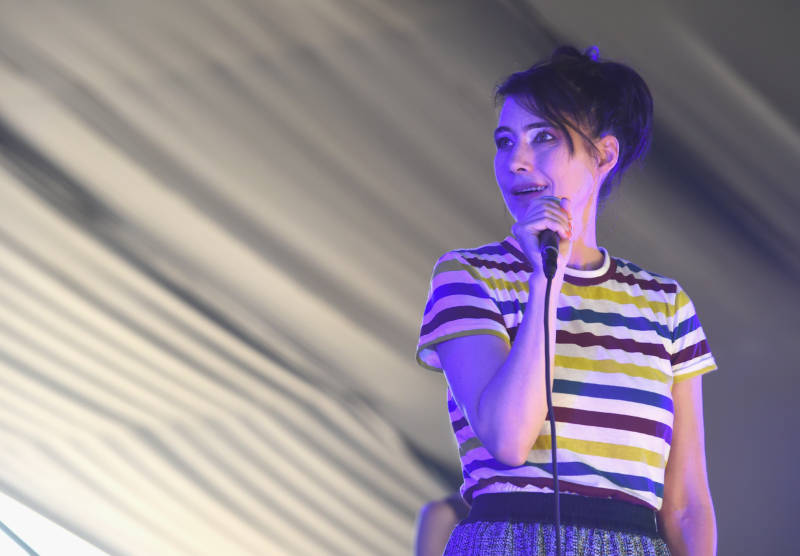On April 26, at the second show of Bikini Kill's much-anticipated reunion tour, one of the most immediately noticeable things was just how many children were gleefully running around. They were overwhelmingly female, visibly thrilled to be there, and a lot of them already knew the songs.
One little girl, roughly seven or eight years old, sat atop a man's shoulders in the middle of the pit, waving her arms and headbanging. Another, nine or ten, watching from a balcony above the stage, grabbed her dad's hand whenever her favorite songs came on and used him as leverage to jump up and down, roughly shaking her head from side-to-side.
After Bikini Kill was done with their opening song ("This is Not a Test"), frontwoman Kathleen Hanna stopped to check on some little girls in the front row, concerned they might be getting hurt. (They were fine, apparently.) "It looks like you're doing a really good job of Girls To The Front," Hanna quipped. "I don't even have to say anything..."
On one hand, it makes perfect sense. Original Bikini Kill fans are now of an age where having young children is to be expected. But when the quartet first emerged in the early '90s, the content of their songs was considered pretty shocking, even for a teen audience. "Suck My Left One" features familial sexual abuse; "Carnival" starts with the line "This is a song about 16-year-old girls giving carnies head for free rides and hits of pot"; and "I Like F**king" embraces unapologetically assertive female sexuality.


